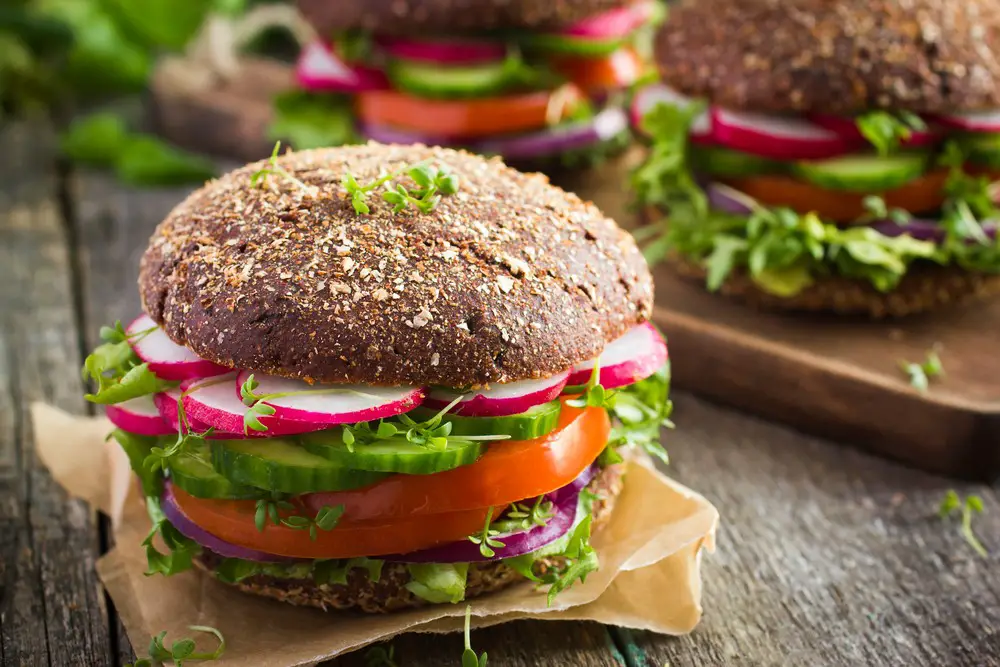Transitioning to a vegan diet can be daunting, but it doesn’t have to be. We’ve gathered eight insightful tips from founders, CEOs, and other professionals to guide you. From embracing plant-based swaps to incorporating vegan days and international cuisine, these experts share their best advice on making the switch without feeling deprived or overwhelmed.
- Embrace Plant-Based Swaps
- Adopt Gradual Progression
- Add Before Subtracting
- Gradually Eliminate Certain Foods
- Adopt a “One Meal at a Time” Approach
- Choose Flavorful Plant-Based Alternatives
- Plan Your Vegan Diet in Advance
- Incorporate Vegan Days and International Cuisine

Embrace Plant-Based Swaps
When preparing a meal or snack, think about how you can swap out animal-based ingredients for plant-based ones. This isn’t about giving up your favorite dishes; it’s about reinventing them with plant-powered goodness.
For example, swap the dairy-based cream with cashew or almond cream if you’re craving a classic pasta dish with a creamy sauce. These alternatives offer a luscious texture and a rich taste with no deprivation. You’ll be amazed at how well your taste buds adapt and appreciate these new flavors.
Replace eggs with flax or chia seeds soaked in water, ripe mashed bananas, or applesauce when baking. These substitutions maintain eggs’ binding and moistening properties without compromising taste or texture.
Craving a burger? Try a hearty homemade black bean or mushroom patty. The savory umami flavors will satisfy your taste buds, and you’ll relish the experience of crafting your own unique creations.
Becky Lay, Founder, Luminate Wellness
Adopt Gradual Progression
Transitioning to a vegan diet can be quite a journey, and it’s understandable to fear feeling deprived or overwhelmed. One tip is the idea of “gradual progression.”
When first trying a vegan diet, going cold turkey is unnecessary. Switching out cow’s milk for almond milk in morning smoothies is easy, and many prefer the lighter taste. Week by week, look for similar minor changes to make. Before long, the whole diet can transform.
In a way, it’s like chakra healing—gradual shifts can lead to profound transformations. So, there’s no need to stress about doing it all at once; start somewhere.
Clare Gilbey, Founder, Chakra Practice
Add Before Subtracting
As with anything, it’s important to be kind to yourself. Transitioning to a plant-based diet can be overwhelming if not done correctly. Initially, add to your diet rather than taking away your go-to foods.
So, if you eat burgers frequently, try adding grated vegetables to the burger and reducing the meat, or reduce the size of chicken fingers, but add a meaty vegetable like mushrooms or artichokes. Slowly experiment with new vegetables, nuts, and even cooked fruits until they become the star of your meal.
Dr. Ben Carvosso, Owner, MP Nutrition
Gradually Eliminate Certain Foods
Going vegan removes many of your previous options so that it can feel like a lot at once. This is why transitioning into a vegan diet could make the process easier. Gradually eliminate certain foods from your meal plan over time. For instance, you can start by avoiding eggs, fish, and milk.
Brandon Adcock, Co-Founder and CEO, Nugenix
Adopt a “One Meal at a Time” Approach
Diving into a vegan lifestyle can often feel overwhelming, especially when our emotional connections to food run deep. Drawing from my emotional intelligence and mindfulness background, I’d recommend the “One Meal at a Time” approach.
Instead of overhauling your entire diet immediately, start with just one vegan meal a day. This gradual shift allows you to explore vegan options, understand your preferences, and adjust without feeling deprived or frustrated.
Focusing on one meal gives you the space to learn and adapt, making the transition smoother, more sustainable, and more successful in adopting this new lifestyle.
Bayu Prihandito, Psychology Expert, Life Coach, Founder, Life Architekture
Choose Flavorful Plant-Based Alternatives
A seamless transition to a vegan diet is possible with the proper approach. Focusing on flavorful and familiar plant-based alternatives is one strategy for avoiding feelings of deprivation or overload.
By incorporating a variety of colorful fruits, vegetables, whole grains, legumes, and nuts, you can replicate the variety of tastes and textures you are acclimated to. Utilize mushrooms, for instance, as a versatile flesh substitute. Portobello mushrooms have a robust texture that complements burgers, while oyster mushrooms can imitate seafood flavor. Before grilling or sautéing mushrooms, marinating them with your preferred seasonings improves their flavor.
By investigating and experimenting with these delectable plant-based alternatives, you will maintain a satiating diet and expand your gastronomic horizons. This strategy transfers the emphasis from deprivation to delicious culinary experiences, making the transition to a vegan lifestyle enjoyable and sustainable.
Martin Seeley, CEO, Mattress Next Day
Plan Your Vegan Diet in Advance
Plan out your vegan diet completely before you start pursuing it. If you try to work on it as you go, you constantly worry about your next meal and how you will put it together.
On the other hand, if you develop a weekly meal plan, you will know exactly what you need to get at the grocery store and what your daily eating habits will look like.
Natalia Morozova, Partner, Cohen, Tucker & Ades, P.C.
 Incorporate Vegan Days and International Cuisine
Incorporate Vegan Days and International Cuisine
Transitioning to a vegan diet can be made smoother by gradually incorporating plant-based meals. Start by dedicating one or two days a week to entirely vegan eating. You’ll discover delicious and satisfying options as you experiment with diverse recipes. One specific tip is to explore international cuisines that naturally feature plant-based dishes.
For instance, Mediterranean, Indian, or Thai cuisines offer many flavorful and hearty vegan choices. This approach introduces variety and makes the transition enjoyable and less daunting, ensuring you feel fulfilled and excited about your dietary choices without the sense of deprivation.
Aviad Faruz, CEO, Know Mastery
Tips & Takeaways: Unpacking Expert Strategies for Your Vegan Voyage
- Master the Swap Game: Reinvent classic dishes with plant-based substitutes without sacrificing flavor or satisfaction.
- Ease Into It: Don’t rush. Start small, like swapping cow’s milk for almond milk, and build up.
- Add Before You Subtract: Incorporate more plant-based foods into your meals, naturally steering towards a vegan diet.
- Phase Out Strategically: Let go of animal-based products one at a time to avoid overwhelm.
- One Meal at a Time: Begin with one vegan meal daily to gradually adjust and understand your preferences.
Extra Sprinkles: Our Two Cents on Making Veganism Second Nature
- Adventure Through Global Cuisines: Veganism isn’t just salads. Explore vegan dishes from around the world to keep your meals exciting.
- Get Support: Whether it’s a vegan friend, an online group, or an app, having a support system can make the transition easier.
- Embrace Meal Planning: A well-thought-out weekly meal plan can eliminate stress and ensure a balanced diet.
- Remember Why You Started: Whenever you feel stuck or tempted, revisit your reasons for going vegan—whether it’s for health, animals, or the environment. It can be a powerful motivator.

